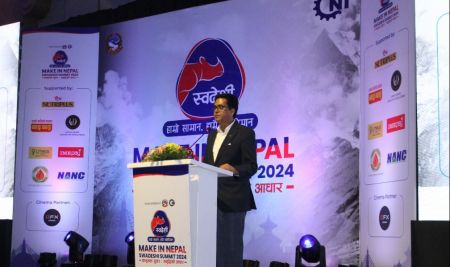BY Team Ventures
In private equity and venture capital (PE/VC), an extensive comprehension of valuation practices is crucial for investors' smart decision-making. Valuation involves determining the current value of assets or businesses, considering the company's growth potential, financial performance, clientele concentration, company reputation, and overall management practices. External factors such as market conditions, industry growth, market size, and competition influence the distinctive value assessment in this dynamic landscape.
The dynamic PE/VC landscape, characterised by high stakes and constant market evolution, underscores the need for an accurate valuation. The accuracy of valuations is paramount for fair negotiations, ensuring equitable transactions, and serving as a fundamental guide for investment decisions. Valuation serves a dual purpose as a risk management tool, enabling investors to make informed choices and mitigate potential financial uncertainties. Accurate valuations give investors the necessary information to make well-informed and strategic investment decisions.
The evolution of valuation techniques within the PE/VC industry is characterised by integrating qualitative factors alongside traditionally relied-upon methods like discounted cash flow and comparable analysis. The increasing recognition of Environmental, Social, and Governance (ESG) consideration has prompted a notable shift towards incorporating qualitative metrics into the valuation framework, highlighting the industry's commitment to a more comprehensive and forward-looking approach.
Key Concept in Valuation
Before diving into the various valuation methods, this section explores a few key concepts essential in the valuation process in the PE/VC industry.
Burn Rate
The burn rate signifies how quickly a company uses its capital for operations before achieving positive cash flow. It is crucial for startups as it determines their runway, indicating the time until they exhaust their funds.
Discount Rate
The discount rate is the interest rate used to assess the present value of future cash flows in discounted cash flow (DCF) analysis. It aids in evaluating whether the anticipated future cash flows from an investment surpass the current capital outlay required for funding. This is one of the significant factors influencing valuation for investors, making it crucial for them to assign it considerable importance.
Due Diligence
Due diligence is a thorough process that evaluates a company’s financial, legal, and operational aspects before committing an investment. This rigorous examination serves as a critical tool for PE/VC firms.
EBITDA and Cash Flow
Earnings before Interest, Tax, Depreciation, and Amortisation (EBITDA) and cash flow analysis are essential metrics for evaluating a company's financial health, and they provide insights into its operating performance and the money generated and used in day-to-day operations for private equity investors.
Financial Projection
The financial projection provides anticipated figures for financial statements, encompassing revenues, expenses, and other relevant financial estimates. It incorporates both internal data and external market factors to generate these forecasts. Without the completion of financial projections, investors cannot determine the value of businesses' assets, underscoring the critical role of these projections in informed decision-making and valuation processes.
The evolution of valuation techniques within the PE/VC industry is characterised by integrating qualitative factors alongside traditionally relied-upon methods like discounted cash flow and comparable analysis.
Overhang
Overhang describes the possibility of dilution in the value of equity investments due to stock options that are not yet converted into equity shares.
Pre and Post Money
In venture capital, the pre-money valuation is the startup's value before the new investment. In contrast, the post-money valuation includes the investment and reflects the company's value after the new funding.
Runway
Runway refers to the duration, measured in months, a business has before it runs out of cash.
Term Sheet
A non-binding document between a private equity firm and a target company outlining critical terms for a proposed investment, including investment amount, valuation, ownership structure, governance rights, exit provisions, and other significant terms.
Terminal Value
Terminal Value represents the anticipated value of operations in the foreseeable future within a Discounted Cash Flow (DCF) valuation. It significantly contributes to the total enterprise value, underscoring the importance of accurately calculating it for the overall reliability of a valuation model. Typically, the terminal value constitutes a significant portion, ranging from 60 to 80 percent, of the total valuation of companies when using the DCF model.
Write-up/Write-down
An increase or decrease in an investment or asset's valuation or book value.
Valuation Method
In the following section of this article, we will thoroughly examine the distinct valuation methods widely practised within the PE/VC industry.
1. Common Methods
Discounted Cash Flow Method
The Discounted Cash Flow (DCF) Valuation method is a widely employed method that estimates the fair value of an investment by considering expected future cash flows, the end-of-life value (terminal value), and risk-adjusted discount rates. It forecasts a company's intrinsic value, representing the true worth of a company, by factoring in future cash flows and costs and discounting projected cash flows and terminal value. This valuation method is particularly well-suited for valuing companies with promising earnings and cash flow prospects. In Nepal’s PE/VC industry, this method is the predominant and extensively applied approach for determining a company’s intrinsic value.
While the DCF method provides a detailed analysis for determining a company's intrinsic value, it comes with challenges due to its complexity, the absence of competitor comparison, and difficulty in estimating future revenue.
Economic Profit-Based Valuation
The Economic Profit-Based Valuation method evaluates a company's financial performance by considering direct and indirect costs. It provides insights into whether the company effectively utilises its capital to generate returns that exceed the cost of capital, a crucial factor for assessing long-term sustainability and shareholder value creation. This method is applicable in the valuation process of companies with a consistent and stable profit.
This method aids decision-making by factoring explicit and estimated costs of missed opportunities into net income analysis. However, its theoretical nature poses challenges, as opportunity costs rely on assumptions, hindering precise determination of the revenue of untaken opportunities.
Residual Income Valuation Model
The Residual Income Valuation Model is a method used to determine the intrinsic value of a stock or company. This approach is based on the idea that a company’s equity value is the sum of its book value and the present value of future residual incomes. In this context, residual income indicates the earnings generated by the company that exceeds the required rate of return on its equity capital. This method is suitable for companies with standardised income, especially those operating in highly regulated industries such as the media industry.
Residual income valuation methods utilise readily available financial data, which is particularly useful for firms lacking dividends or positive free cash flow. Despite prioritising economic profitability, caution is advised due to their reliance on forward-looking estimates, making valuations susceptible to biases or historical misrepresentations.
Earnings Capitalization Method
Earnings capitalization is a valuation approach that determines a company’s value by calculating the net present value of growth opportunities. This method is commonly employed for valuing shares of profitable companies that either do not pay dividends or offer minimal dividends. This method recognizes the significance of potential future growth when companies reinvest earnings rather than distributing substantial dividends. This method is particularly effective for companies with consistent profits, as demonstrated by the stability observed in hydropower companies.
This method is valued for its simplicity, consideration of future earnings, and reliance on accurate historical values. However, limitations include neglecting CAPEX, overlooking the cost of equity, and not factoring in the company’s liabilities. Notably, it does not account for potential future growth, potentially resulting in underestimated company income.
The replacement cost method faces challenges due to potential information gaps and reliance on historical data, potentially overlooking present and future market dynamics.
Book Value Method
The book value method provides a straightforward approach to assessing the value of a portfolio company. This method relies on the book value reported in a company’s financial statements, representing its equity value, and is considered significant to depict its worth accurately. It calculates a company's value by subtracting its total liabilities from its assets. Firms employ this method to determine the company's value based on historical costs, often serving as a baseline for buy/sell agreements within the investment landscape. Given its reliance on historical data, this method is preferred by conservative investors. Reliance Spinning Mills, the largest mill in Nepal and a public limited company applied this method, among others, in its valuation done in 2077.
The book value method offers simplicity and consistently measures a company's net worth over time. Despite these advantages, it falls short in accounting for intangible assets like brand value, lacks accuracy in reflecting market value, and can be influenced by inflation.
Replacement Cost Method
The replacement cost method evaluates an asset's current worth by comparing it to the expense of acquiring an identical new asset, known as the replacement cost. This involves categorising all company assets, determining replacement costs based on current market equivalents, and considering factors like taxes and depreciation. The total replacement cost is then compared to market value, with adjustments made considering prevailing market conditions.
Despite being advantageous for considering tangible and intangible assets, the replacement cost method faces challenges due to potential information gaps and reliance on historical data, potentially overlooking present and future market dynamics.
Comparable Company Method
The Comparable Company Method determines a company's value by comparing it to similar publicly traded companies. When companies from the same industries are not available for comparison, it can be done between companies in different sectors but with comparable financial standings. Sarbottam Cement, a manufacturing company, has employed this approach in its valuation. This involves evaluating the subject company using multiples like price-to-earnings (P/E), enterprise value-to-EBITDA (EV/EBITDA), and price-to-book (P/B) ratios, providing a comprehensive comparison of its market value.
This method offers simplicity and broad applicability across industries using publicly available information. Nevertheless, it overlooks company-specific and non-financial factors, is sensitive to market volatility, assumes comparability among companies, and heavily relies on public information and market perception.
From tailored approaches at different lifecycle stages to addressing challenges inherent in private companies, accurate and adaptive strategies are essential.
EV to Revenue Multiple Valuation
The Enterprise Value (EV) to Revenue multiple is a valuation method that compares a company’s revenue to its enterprise value, with a lower value indicating undervaluation. Firms use EV to Revenue to assess the cost of purchasing the entire business, considering all capital providers entitled to the enterprise value.
This method is particularly advantageous for businesses with negative earnings. However, limitations include neglecting considerations of the company's capital structure and profitability and facing comparability challenges across industries and growth stages.
2. Emerging Methods
In addition to the traditional methods mentioned above, a range of valuation techniques is emerging to adapt to the evolving landscape of the PE/VC industry.
Venture Capital Valuation Method
The Venture Capital method tailors its approach to evaluating companies, especially in the tech and startup realms. They consider critical factors like management skills, market potential, technology uniqueness, and financial health. This method ensures a precise valuation aligned with industry standards and the company's growth stage, offering a thorough and objective assessment. Venture Capitalists use this approach to systematically evaluate investments, analysing the startup’s financials and exit potential. Critical components for valuation include the investment size, employed capital expectations, and startup value estimation at the exit.
This method benefits early-stage startups, integrating considerations of risk and expected return while maintaining a strategic focus on exit plans. The challenges associated with this method include uncertainty in estimations, subjectivity in defining the target rate of return, and limited applicability in specific industries.
ESG (Environment, Social, and Governance) Valuation Model
ESG valuation assesses a company's value by examining its environmental, social, and governance performance. The model involves gathering ESG metrics, assigning quantitative values, comparing against industry benchmarks, and integrating ESG impact into financial models. The rise of sustainable and responsible investing (SRI) has elevated ESG considerations, influencing investment decisions and corporate management. Companies prioritising ESG enhance sustainability and overall value, while the absence of ESG considerations can pose significant risks to a company's long-term viability. As this method gains momentum, it is currently used by all foreign-backed PE/VC firms in Nepal for valuing companies. Additionally, impact funds worldwide also assign higher weightage to this method.
This method combines quantitative and qualitative factors, promoting sustainable investing by evaluating the company’s ESG aspects. Challenges include complexity, subjective interpretation, and transparency issues. Despite the challenges, it remains a valuable tool for investors prioritising holistic assessments beyond financial metrics.
Scoreboard Valuation Methodology
The scorecard valuation method assists firms in determining the capital sought by startups, particularly in their initial stages. Before investing, firms evaluate the potential return and aim for ownership percentages in cases like Private Equity. This method helps investors obtain a reasonable valuation for startups with growth potential but no revenue, utilising weighted percentages and market data to calculate an acceptable average.
The scoreboard valuation method is characterised by its ease of use, efficiency, and specific usefulness for startups without revenue. While it helps identify company strengths and weaknesses, its suitability is limited to particular businesses, and acquiring the necessary data for a scorecard can take time for enterprises.
Option Pricing Method
The option pricing method views a startup as a natural option, allowing for exercise or abandonment based on future outcomes. Utilising models like Black-Scholes or binomial calculates the startup's value considering volatility, time to maturity, risk-free rate, and exercise price. This method is beneficial for capturing startup flexibility and optionality and addressing return asymmetry and skewness. This method can serve as an alternative to DCF when conducting a DCF valuation becomes challenging.
Social Network Method
The social network method is an innovative valuation approach that leverages a startup's network effects and social capital. Employing network analysis techniques like centrality and clustering, it calculates the size, quality, and structure of the network the startup establishes. This method is applicable for evaluating network externalities, assessing social influence, and identifying crucial nodes and links driving network growth and value.
Customer-Based Method
The customer-based method, a bottom-up valuation approach, centres on the value derived from acquiring, retaining, and monetizing customers. Key metrics like customer lifetime value (CLV), customer acquisition cost (CAC), churn rate, and retention rate examine the present and future value of the customer base. This method proves helpful in assessing unit economics and scalability and ensuring alignment between valuation and growth strategy and performance.
Intellectual Property Valuation
IP valuation involves assessing the worth of intellectual property assets like patents, trademarks, copyrights, and trade secrets. Whether you're looking to purchase, sell, or licence intellectual property, conducting an IP valuation is essential for comprehending the value associated with the specific IP assets in consideration.
3. Lifecycle-Specific Company Valuation
Evaluating a company demands a personalised approach tailored to its lifecycle stage, considering factors like growth potential, risk profile, and cash flow. This section explores pre-revenue, early revenue, and mature stages valuation methods.
Pre-Revenue Stage
In this stage, valuation relies on non-financial metrics such as market size, management quality, brand value, customer acquisition, user engagement, and innovation. These metrics anticipate future value based on expected market share, revenue growth, and profitability. A significant discount rate is applied due to inherent uncertainty. Valuation methods include venture capital, scorecard, and the Environmental, Social, and Governance (ESG) method. Team Ventures employed this approach when assessing Wiseyak, an AI-based health tech startup.
Early Revenue Stage
Companies in this stage generate revenue but have yet to be profitable. Valuation considers financial metrics like revenue multiples, discounted cash flow, net present value, and non-financial factors. Assumptions about growth, margin, and terminal value may vary. Methods encompass Discounted Cash Flow, EV to Revenue multiples, Comparable Company, ESG, and Replacement Cost. Team Ventures employed these methods with companies like Foodmandu, Nepal Warehousing Company, and Pashupati Renewables.
Mature Stage
In the mature stage, a company with profitability and stable growth is valued using discounted cash flow, comparative company analysis, residual income, economic profit, earning capitalization, book value, and ESG. This considers financial reliability, earnings consistency, and adjustments for one-off items. Team Ventures employed these methods while investing in Machhapuchchhre Capital Limited.
4. Valuation Methods Mandated by Nepal’s Regulatory Authority
The Securities and Exchange Board of Nepal (SEBON), the regulatory body of the country’s securities market, endorses valuation methods that underscore a dedication to transparency and international norms. SEBON advocates for a thorough valuation approach, focusing on capital earnings from the preceding three years, the Discounted Cash Flow (DCF) method, and a premium calculation per international standards.
Challenges and Complexities in Valuation
Valuing companies in the Private Equity and Venture Capital (PEVC) sector is uniquely challenging due to several inherent complexities. Limited financial transparency in private companies, exempt from public financial disclosures, hampers access to accurate and current data crucial for precise valuations. Moreover, the need for comparable data for private businesses poses challenges in applying standard valuation methods reliant on comparisons. The complex valuation of intangibles, a standard in innovative fields, further complicates assessments, especially regarding the worth of patents and brand recognition. Valuing early-stage companies, addressing exit strategy uncertainties, and factoring in the impact of market conditions and management efficacy contribute to the multifaceted nature of valuation challenges in the PEVC industry. Navigating complex capital structures prevalent in private companies becomes crucial for a comprehensive and accurate valuation.
Conclusion
The PE/VC industry demands agile valuation practices to adapt to the dynamic landscape of various industries. It is crucial to recognize that valuation is not a one-size-fits-all, emphasising the necessity for adaptable and customised approaches to align with the diverse nature of businesses. From tailored approaches at different lifecycle stages to addressing challenges inherent in private companies, accurate and adaptive strategies are essential. Embracing continuous evolution in valuation practices is a strategic imperative for investors aiming for long-term success in this ever-changing landscape.
Case Study 1: Sarbottam Cement
Sarbottam Cement Limited (SCL) is a cement manufacturing company in Nepal. It is the flagship company of Saurabh Group. Saurabh Group is one of the leading industrial groups in Nepal. Sarbottam Cement had an annual turnover of over 800 crores in 2078 and employed more than 500 people.
The company underwent a valuation in 2078 to initiate an Initial Public Offering (IPO) through the book-building process.
The valuation has been conducted using standard methods, employing five distinct ones. Subsequently, the average of these five methods was calculated to derive an average valuation price to minimise the influence of any unusual factor. The five methods utilised were:
● Book Value Method
● Earning Based Valuation
● Projected Earnings Based Valuation
● Comparable Companies Method
● Valuation Multiples
During the valuation process, the widely used DCF method was omitted due to its subjective nature stemming from numerous assumptions. Given that Sarbottam Cement is a mature company operating in a market with stable growth, opting for alternative methods instead of DCF was deemed more appropriate. Thus, the valuation was more based on the Book Value, Earnings, and Comparable Companies method due to the substantial asset base of the company, its capital-intensive nature, and its high rate of return.
Case Study 2: Foodmandu
Foodmandu is a technology-based, on-demand food and beverage delivery company founded in 2010. Following Series A funding through True North Associates in 2016, the company secured additional Series B funding from Team Ventures in 2020.
Before the Series B funding, Team Ventures employed appropriate valuation methodologies to conclude the deal. The valuation methods used were:
● Discounted Cash Flow (DCF)
● Comparable Companies Method
● EV to Revenue Multiples
Given the company's rapid growth, the future prospects seemed promising in terms of financial and non-financial growth indicators, where the DCF method was mostly relevant to capturing the future cash flow.
In the absence of publicly available data on similar private or publicly traded companies in Nepal, comparable companies were selected from the Indian market for valuation. As the company was in an early stage of operation, the revenue multiple method was deemed appropriate to validate the valuation.
(TEAM Ventures, is an industry-agnostic alternative investment firm with a diverse portfolio spanning the energy, technology, real-estate, manufacturing, financial institutions, agro-infrastructure, and electric-vehicles sectors.)






















